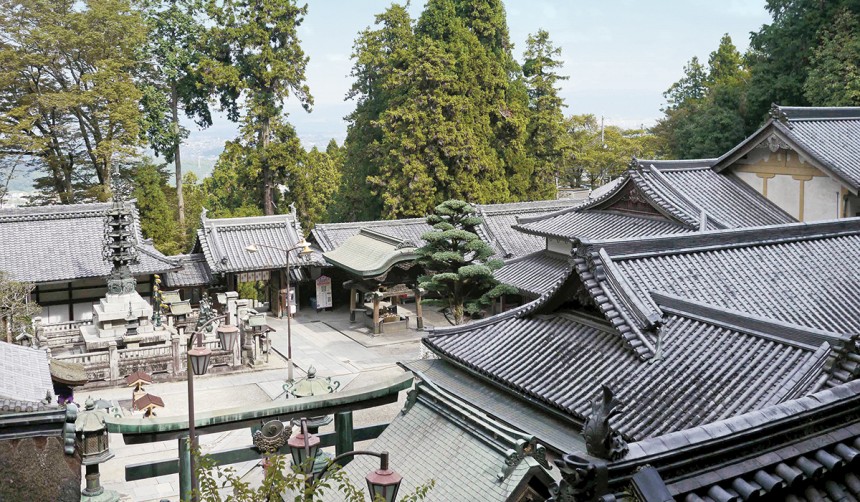
What’s in Ikoma? Those visiting this northern Nara Prefecture city in early spring would witness changeable weather and bare pre-spring gardens—an impression unlikely to place Ikoma in anyone’s top ten.
A better question to ask is: When should one go there? From paths lined by hundred-year-old sakura trees to autumnal festivals and a familiar shrine made mystical under snow, each season has its own special appeal.
Spring
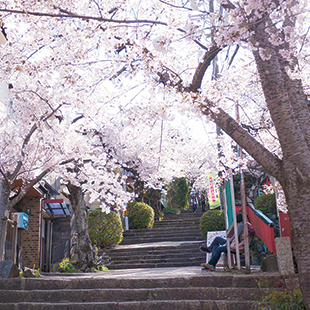
Rather than determinedly hiking the 1.5-kilometer, mostly uphill path from Ikoma Station to Hozanji Shrine, meander beneath the blossoms lining the stone steps.
The walk brims with charm, leading travelers past quaint older homes and small shrines, all be-pinked beneath trees—some of which are a century old.
There are also small parks with views over the city, usually beckoning other picnickers with whom to make friends.
Summer
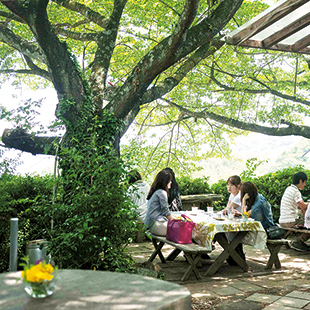
What better season for being outside than summer? Sri Lankan restaurant Lucky Garden has tables beneath leafy trees from which to enjoy natural vistas while eating the locally-sourced food, transformed into exotic dishes.
There are even sheep to visit and feed in a petting area at Lucky Garden, and a small gallery of handmade crafts to browse. The restaurant is a perfect spot for relaxing post-hike, or just for chilling with friends—if you’re the type that prefers to enjoy the great outdoors with minimal sweating. It’s best to visit anytime outside of obon, but be sure to call in advance to reserve your table.
Fall
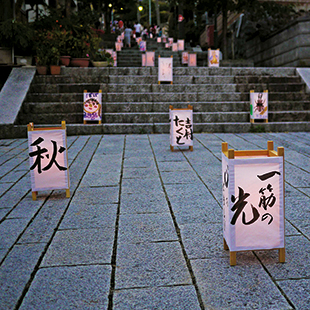
Blue skies make for the best hikes—and Ikoma is primarily known by many for its wonderful trekking routes. A popular course starts from Ishikiri Station, leading up through the forest, with climbing views of Osaka.
Those with cars may drive along the Shigi-Ikoma Skyline and stop to snap pictures of the panoramic megalopolis. One of this season’s must-see events is the lantern festival held in September to celebrate the equinox, where ten thousand lanterns—many of which are created by local artists and school children—line the path up to Hozanji. Best time to visit: September 23, for the festival.
Winter
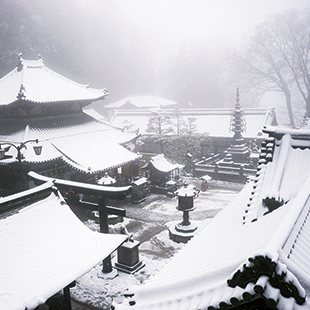
Even on a clear day, Hozanji Shrine is misty: Smoke from incense wafts out from the wide, bronze urns, bathing worshippers who visit. In winter, the inclement weather hits the shrine first, hiding her from the city below.
Snow falls infrequently, however; and when it does, the road up becomes slippery and dangerous, especially for pedestrians. This means fewer people at the shrine, which has become even more mystical beneath the snow and distant from the real world.
For photographers, this is a great opportunity to visit and enjoy Hozanji’s serene, cold beauty. The best times to visit are January and February to see the most snow—so keep an eye on the weather forecast.
Ikoma, like the rest of Japan, is a city that changes dramatically with each season. For the daytripper, it may seem there are only a few nearby destinations to visit. For travelers, timing can be everything. Knowing when to go will make the trip more memorable and make Ikoma worth visiting again next season.
Info
Ikoma is an easy day trip from Osaka or Kyoto. From Osaka, take a rapid or limited express on the Kintetsu Line from Osaka-Namba Station directly to Ikoma. Via the subway, take the green Chūō Line. From Kyoto, take a Kintetsu Line rapid or express heading to Yamatosaidaiji, and then change to a train heading to Ikoma or Osaka-Namba.
Lucky Garden
Tel: 0743-77-7936. www.luckygarden.jp (Japanese only)





